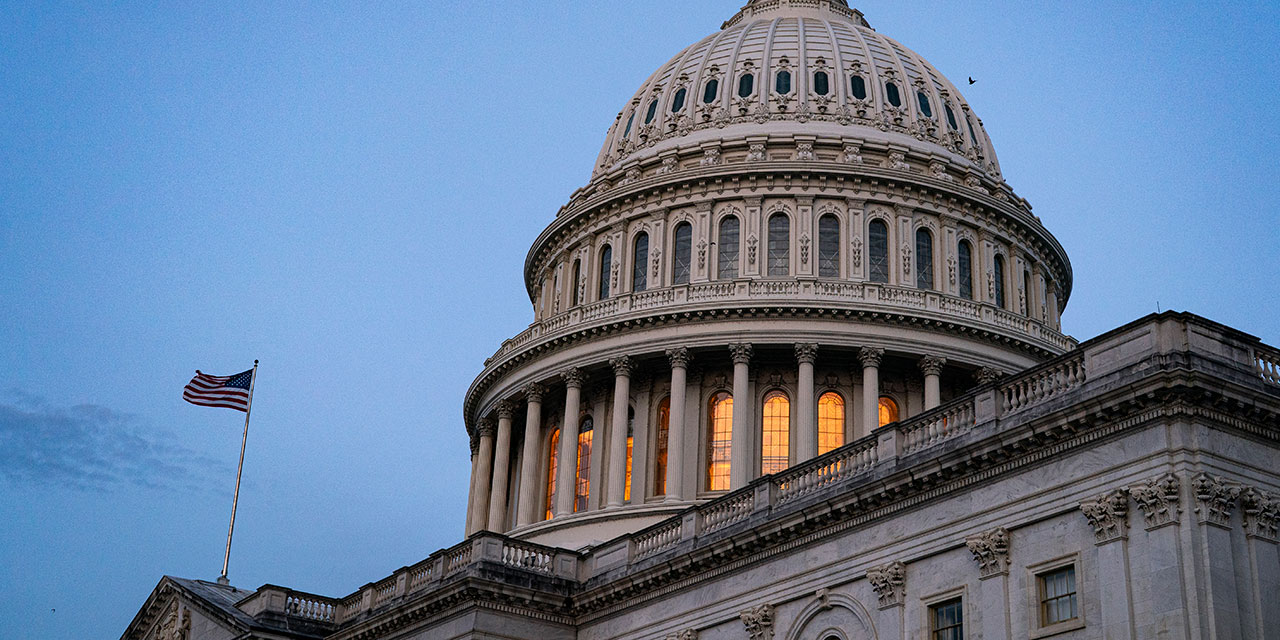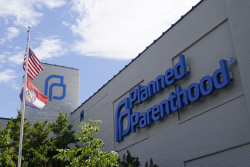
Much of what is genuinely new in the One Big Beautiful Bill Act (OBBB), President Trump’s recently passed omnibus law, is relatively unimportant.
The OBBB’s revenue reductions largely result from the continuation of existing policy. Republicans exaggerate its savings from health-care reforms; Democrats overstate its cuts in coverage. In truth, the GOP’s tiny congressional majorities have done little more than perpetuate the status quo. Given the ever-mounting debt, that path is unsustainable.
Finally, a reason to check your email.
Sign up for our free newsletter today.
The Congressional Budget Office estimates that the OBBB will reduce federal revenue by $4.4 trillion over a ten-year budget window—roughly 1.2 percent of GDP. That makes it smaller than the 2012 bipartisan agreement that made the George W. Bush tax cuts permanent (which reduced revenue by 1.8 percent).
In practice, the OBBB is mostly just a renewal of 2017’s Tax Cuts and Jobs Act. It maintains that law’s reductions to personal income tax rates, much higher standard deduction, increased Child Tax Credit, and corporate deductions for investments in new equipment.
By contrast, the law’s architects designed the high-profile new provisions associated with Trump’s campaign promises to cost little. For instance, the “no tax on tips” provision will reduce revenue by only $32 billion over the ten-year budget window. That’s because the income tax currently generates little revenue from declared tips, earned by low-income workers who mostly pay only payroll taxes. Rather than claiming the new capped itemized deduction, most eligible restaurant workers will still use the standard deduction instead. That’s also true for retirees, who would benefit from a higher deduction—similarly set to expire after four years—for taxes on Social Security benefits.
Together, Trump’s 2024 campaign tax pledges cost only $245 billion in lost revenue, while the bill’s “America First” international tax reforms amount to $180 billion. These have been more than offset by the bill’s termination of $500 billion in tax credits for “green energy” established under the Biden administration. Yet, the bill mostly does not offset the extension of the big tax cuts from Trump’s first term.
Democrats and Republicans alike have greatly exaggerated the legislation’s other spending cuts. Excluding health care, CBO estimates that the OBBB will increase federal spending slightly—with more spending on defense and immigration enforcement exceeding savings from reduced student-loan subsidies and the expansion of work requirements for working-age adults receiving food stamps.
Pointing to the bill’s estimated $1.15 trillion ten-year cuts to federal health-care spending, Drew Altman argued in the New York Times: “We’ve never seen health care cuts this big.” This is only because we now spend much more than we used to. CBO expects the OBBB to reduce projected federal health-care spending by 3.8 percent over the next ten years—much less than the 8.8 percent reduction enacted by the Balanced Budget Act of 1997.
Even after the OBBB, federal health spending is projected to grow from approximately $2 trillion in 2025 to $3.4 trillion in 2035. The legislation makes essentially no change to Medicare. Unlike Republicans’ 2017 health-care reform proposals, the OBBB makes no attempt to limit states’ ability to claim ever more federal funding by continually expanding their Medicaid programs.
A third of the bill’s projected health-care savings comes from restricting able-bodied adults’ eligibility for Medicaid with vague “community engagement” requirements. But since states can get $9 in federal funding for every $1 they spend on such adults, they have little incentive to impose or enforce strict limits. The resulting savings and associated losses of health-care coverage are likely greatly overestimated.
Another third of savings comes from restrictions on states’ ability to inflate federal reimbursements for Medicaid costs by overpaying insurers and taxing the hospitals that deliver the services. These reforms would likely do little to reduce access to care. The OBBB merely prevents states from further expanding overpayments to insurers, while restrictions on hospital taxes are more than offset by higher direct federal payments in the near-term.
The last tranche of health-care savings comes from increased oversight and verification of eligibility for Medicaid and Obamacare benefits. Because the government pays full premiums for most enrolled, insurers have claimed federal funds for millions of Americans who did not know they were even signed up. This reform is likely to generate substantial real savings, though some who genuinely need coverage may lose it.
Given the backdrop of rising deficits and national debt, the OBBB’s trimming of health-care costs is surely inadequate. From 1975 to 2024, federal revenue averaged 17.3 percent of GDP. It was 17.1 percent of GDP in 2024, and the OBBB will keep it there in 2034. But CBO projects existing spending commitments to surge from 21.1 percent to 24.4 percent of GDP—mostly due to the relentless growth of Medicaid and Medicare.
Neither party seems eager either to increase taxes or cut spending greatly, but rising interest rates may soon force them to do both.
Photo by Al Drago/Getty Images
City Journal is a publication of the Manhattan Institute for Policy Research (MI), a leading free-market think tank. Are you interested in supporting the magazine? As a 501(c)(3) nonprofit, donations in support of MI and City Journal are fully tax-deductible as provided by law (EIN #13-2912529).
Source link


















